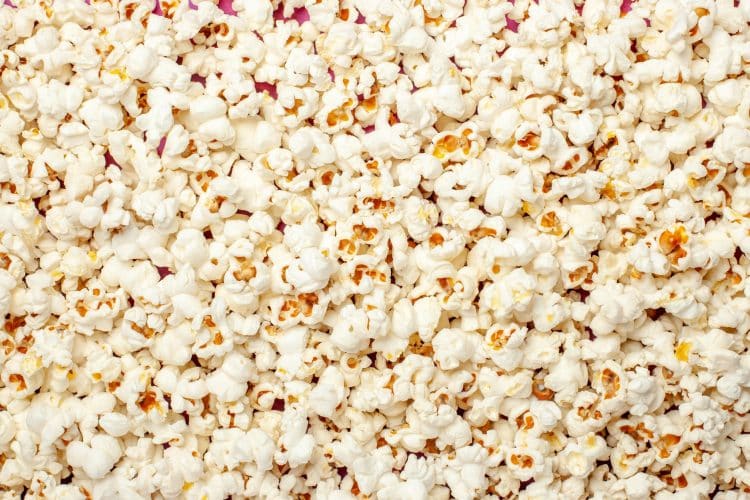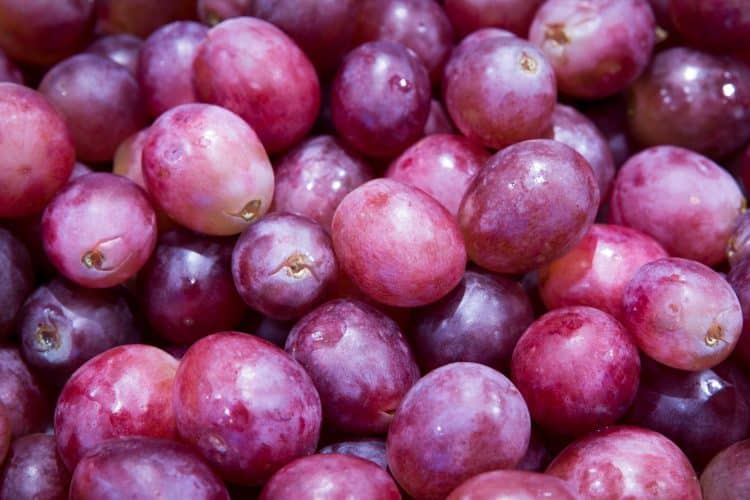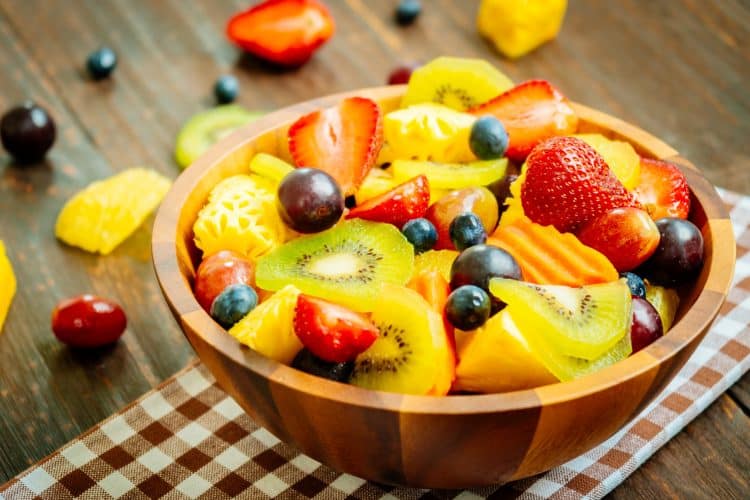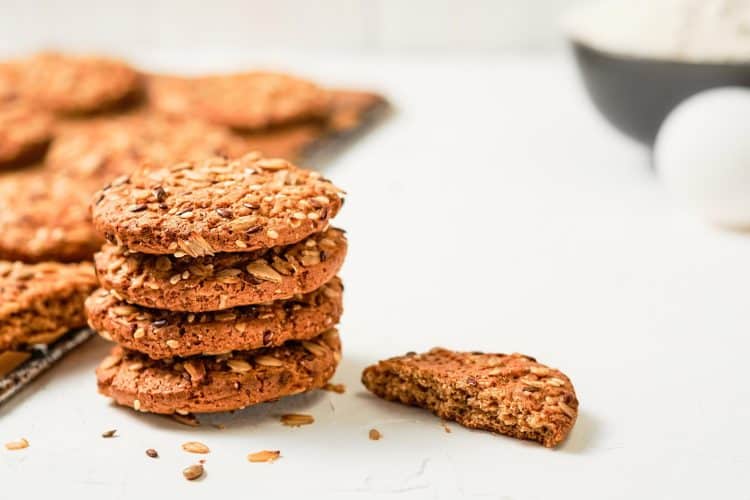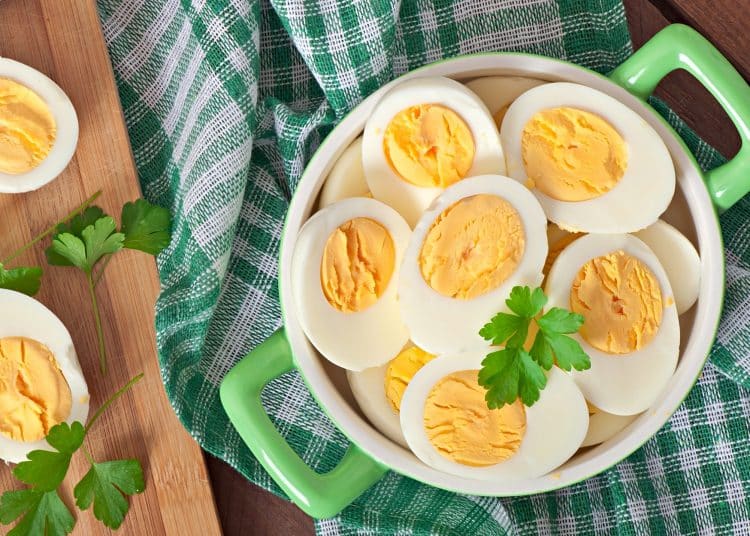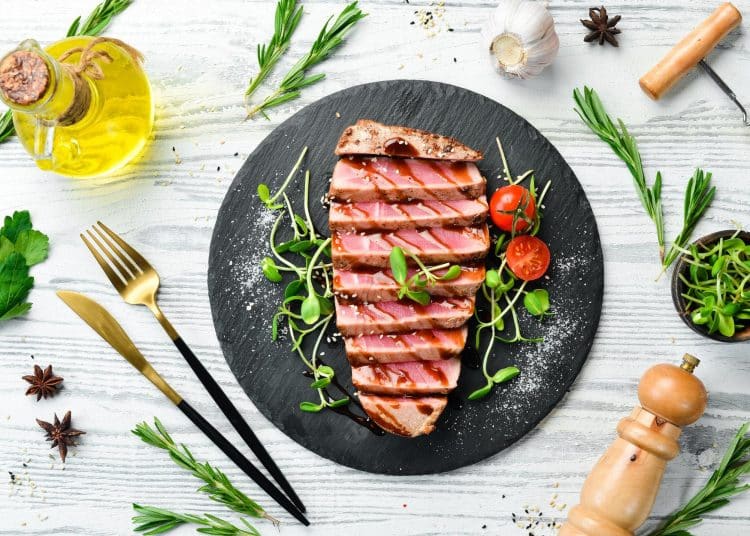Snacking is generally considered bad, whether you’re trying to lose weight or maintain your body composition. The reality is that it’s not the actual snacking but the snack ingredients that are usually the problem.
The right snacks at the right time can deliver a much-needed energy boost and muscle-building protein. While low-carb snacks are a hit, low-fat options are slowly but surely gaining traction.
In this article, I’ll break down the benefits of low-fat snacking and provide you with a dozen of the best low-fat snacks to help you meet your body’s energy needs while satisfying your taste buds.
Why Choose Low-Fat Snacks?
Forty years ago, low-fat snacks were everywhere. Back then, the prevailing belief was that fat caused weight gain. As a result, most snack foods would feature a ‘low fat’ sticker on the packaging.
We now know that simple carbohydrates rather than fat are the main contributors to fat gain. We understand that healthy fats, which are found in fatty fish, nuts, avocados, and coconut oil, provide a whole host of health benefits.
Level Up Your Fitness: Join our 💪 strong community in Fitness Volt Newsletter. Get daily inspiration, expert-backed workouts, nutrition tips, the latest in strength sports, and the support you need to reach your goals. Subscribe for free!
As a result, we see a lot of low-carb snacks on the market that have a relatively high amount of healthy fats. However, some people want to cut the fats from their snack foods.
There is a crucial reason you’d want to opt for low-fat snacks — fats are high in calories!
A gram of fat contains nine calories. Compare that to protein and carbohydrates, which comprise four grams each.
To lose weight, you must maintain a negative caloric balance. That means you must burn off more calories than you consume daily.
One way of doing this is to opt for snacks low in calories and fat.
It makes little sense to replace the fat in your snacks with carbs, especially if your goal is weight loss. Focusing on snacks that are high in protein is a better choice.
Protein is the most thermic of the three macronutrients. Digesting and absorbing protein requires about 30% more energy than fats or carbs.
Protein is also very filling. So, if you consume low-fat, high-protein snacks between main meals, you are likely to eat fewer calories overall, with your main meals being smaller.
What Makes a Snack Low Fat?
There is no universally accepted definition of what makes a snack low-fat.
As a personal trainer who gets a lot of questions about the best snacks, I’ve consulted with several nutritionists over the years. Most agree that a snack should have 5 grams or fewer of fat content to be considered low fat.
So, that’s the baseline I’ve set in compiling the following 12 best low-fat snack foods list.
12 Low-Fat Snack Foods
Here are the 12 best low-fat snacks you can choose from:
1. Popcorn
Popcorn is a healthy and satisfying low-fat snack without butter and added sugars. As a whole grain, it is a good source of fiber that fills you up and assists with healthy digestion.
Popcorn, especially the air-popped variety, is very low in calories. A cup only contains around 30 calories.
Unflavored popcorn is minimally processed and doesn’t contain many preservatives or additives.
Popcorn contains essential nutrients, including vitamins B1, B3, B6, manganese, phosphorus, and polyphenols.
2. Greek Yogurt
Unflavored Greek yogurt is a high protein, low fat, and low carb snack. Use it as the base for a dessert snack, adding fruit like strawberries or bananas for a guilt-free evening snack.
Greek yogurt contains probiotics, which help to maintain a healthy gut microbiome and enhance the immune system. It’s also high in calcium, promoting bone health, and includes the essential nutrients potassium, phosphorus, and B vitamins.
As plain Greek yogurt is low in carbohydrates and sugar, it is a good option for people who are lactose intolerant.
3. Grapes
Grapes are an excellent guilt-free snack. They possess health advantages that benefit the body and induce weight loss.
Grapes help control hunger by regulating blood glucose levels. This lowers insulin release and suppresses leptin production, the hunger hormone.
They are also an incredibly nutrient-dense fruit, packing a lot of nutrition and energy into a minimal calorie count. It’s rich in antioxidants, beta-carotene, lutein, selenium, and vitamins A, C, and E.
A standout compound in grapes is resveratrol. Officially classified as a stilbene, resveratrol has powerful antioxidant properties and can prevent the blood clotting associated with strokes and heart attacks.
Level Up Your Fitness: Join our 💪 strong community in Fitness Volt Newsletter. Get daily inspiration, expert-backed workouts, nutrition tips, the latest in strength sports, and the support you need to reach your goals. Subscribe for free!
4. Cottage Cheese with Pineapple
Cottage cheese represents a great source of protein while also being low in fats, especially when you choose the low-fat variety. It’s also a good source of phosphorus and calcium.
Adding pineapple chunks or slices to your cottage cheese adds a delightful burst of flavor while boosting the antioxidant and vitamin C content. Pineapple also contains bromelain, which boosts digestive health.
5. Fruit Salad
Most fruits are low in fat, so a fruit salad makes a delicious, healthy snack. Including a range of fruits will provide dietary fiber, antioxidants, folate, potassium, vitamin C, and other essential nutrients.
Fruits contain natural sugars known as fructose. This delivers an easily digestible, quick source of energy. Most fruits also have a high water content, helping you to stay hydrated.
Fruits tend to fill you up for minimal calorie cost, making them ideal for people trying to lose weight.
When preparing a fruit salad, go for a range of colors, as this will provide a variety of phytonutrients. Avoid store-bought canned fruit salad, which is usually high in added sugars.
6. Celery Sticks with Hummus
Celery sticks are high in fiber and low in calories. Pairing them with hummus made from chickpeas, which is also fiber-rich, makes for a very satisfying healthy snack that will fill you up between meals.
Celery is highly nutrient-dense, containing high amounts of vitamins C, K, folate, and potassium. Add the B vitamins, iron, and magnesium from hummus, and you have an exceptional between-meal treat.
Both celery and hummus contain proteins, but neither of them is complete. Combined, however, they balance each out to deliver a complete amino acid profile.
7. Oatmeal Cookies
Oatmeal cookies are a healthy alternative to high-sugar, store-bought cookies. They’re high in fiber and protein while having a low fat content. This is especially true when you swap out fatty ingredients for alternatives like apple sauce and mashed banana.
Instead of refined sugar, use natural sweeteners like honey or maple syrup. You can also boost the protein content using high-protein flour, such as almond flour.
Here’s an easy-to-prepare recipe for oatmeal cookies:
Ingredients:
- 1 cup old-fashioned rolled oats
- 1/2 cup whole wheat flour
- 1/2 teaspoon baking soda
- 1/2 teaspoon ground cinnamon
- 1/4 teaspoon salt
- 1/4 cup unsweetened applesauce
- 1/4 cup natural almond butter or peanut butter
- 1/3 cup honey or maple syrup
- 1 large egg
- 1 teaspoon vanilla extract
- 1/2 cup add-ins (e.g., dark chocolate chips, chopped nuts, dried fruit)
Instructions:
- Preheat the oven to 350°F (175°C).
- Line a baking sheet with parchment paper.
- Combine the rolled oats, whole wheat flour, baking soda, ground cinnamon, and salt in a mixing bowl.
- Stir the dry ingredients until well combined.
- Whisk together the applesauce, almond butter (or peanut butter), honey (or maple syrup), egg, and vanilla extract in a separate bowl.
- Mix until the wet ingredients are well combined.
- Add the wet ingredients to the dry ingredients and stir until just combined.
- Fold in the add-ins of your choice, such as dark chocolate chips, nuts, or dried fruit.
- Drop rounded tablespoons of dough onto the prepared baking sheet using a spoon or cookie scoop.
- Space the cookies apart, as they will spread during baking.
- Bake in the oven for 8-10 minutes or until the edges are golden brown.
- Remember that the cookies will continue to firm up as they cool.
- Allow the cookies to cool on the baking sheet for a few minutes before transferring them to a wire rack to cool completely.
8. Baked Apples
Apples are the ultimate natural, low-fat, low-sugar healthy snack. Nature provides us with an abundant range of varieties packed with health-giving nutrients. They are especially rich in a type of soluble fiber called pectin.
Apples also contain a host of essential vitamins, minerals, and antioxidants that boost the immune system and help overcome the effects of oxidative stress.
Baking an apple is a simple process. Remove the core and fill the space with cinnamon or honey. Now, bake the apple until it is tender. I love to eat my baked apple with a bowl of low-fat Greek yogurt.
9. Hard Boiled Eggs
Hard-boiled eggs are among my favorite post-workout snacks. I boil and shell three of them the night before my early morning workout, then put them in a snaplock plastic bag and into the side pocket of my gym bag. On the way out the gym door, I swallow down all three eggs, giving me nearly 20 grams of protein.
Eggs also provide a good source of vitamins and minerals such as vitamin B12, vitamin D, vitamin A, phosphorus, and iron. There is some fat in the egg yolk, but this is healthy unsaturated fat that is good for heart health.
Eggs are also a fantastic source of choline needed for brain health.
10. Protein Shake
We mainly associate protein shakes with post-workout nutrition, but they’re a great between-meal snack. Protein shakes are highly satiating. That means they’ll cure your hunger and help you reduce the size of your upcoming meal.
Use water or low-fat milk to ensure your shake has a minimum fat content. I recommend choosing a whey protein isolate shake, as they have reduced sugars and carbohydrates. If lactose intolerant, an isolate protein shake won’t cause stomach upset.
11. Tuna
A 3-ounce can of tuna is an inexpensive, convenient, low-fat snack. With around 20 grams of protein, a single gram of fat, and less than a hundred calories, tuna offers substantial nutritional value for minimal caloric expense.
Tuna is an excellent source of omega-3 fatty acids. These are the kinds of fats that you need to be consuming for heart and brain health.
Choose tuna that is packed in water rather than oil. Pairing it with whole-grain crackers makes an excellent TV-watching snack rich in fiber and antioxidants.
12. Roasted Chickpeas
Chickpeas are a crunchy delight, providing a powerful combination of plant-based protein and dietary fiber. They’re also a good source of B vitamins, magnesium, and iron.
Roasting your chickpeas adds a delightful texture without needing to add oil. Experiment with herbs and spices such as cumin, cayenne, and paprika to add flavor.
Wrap Up
Snacking between meals can be a good or a bad thing. You must make choices based on nutritional benefit rather than emotion to benefit from it. People trying to lose weight should opt for low-fat snacks packed with nutrients that boost their health for a low-calorie cost.
This article has provided you with a dozen fantastic low-fat snacks. Try them out, decide on your favorites, and add them to your regular snacking repertoire. Remember, the key to successful snacking lies in flavor and the nutritional value these low-fat options bring to your overall diet. Experiment with different combinations, watch portion sizes, and enjoy the journey to healthier, mindful snacking.


